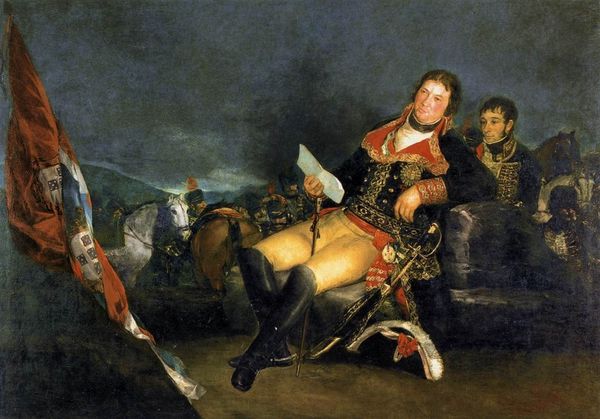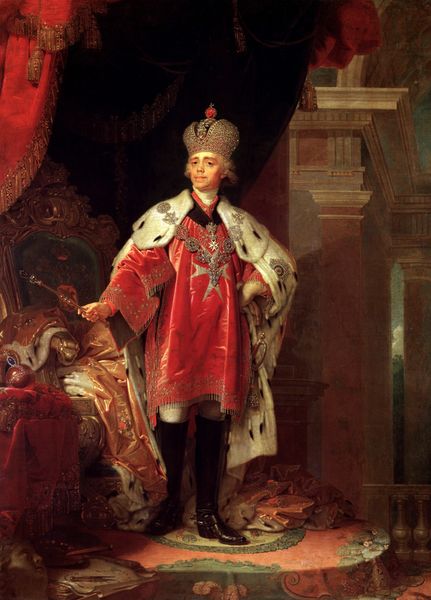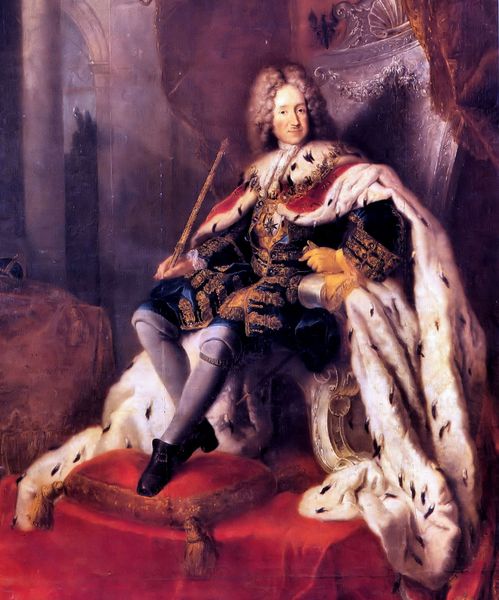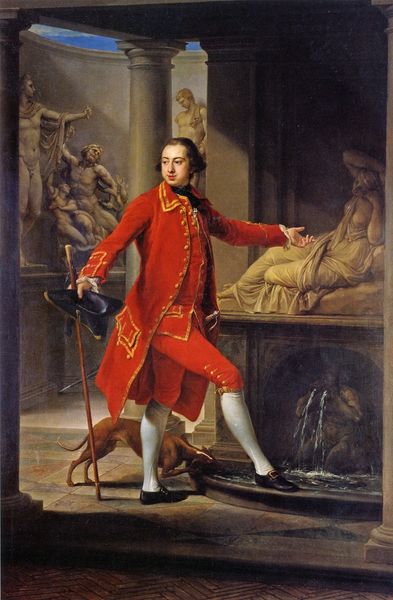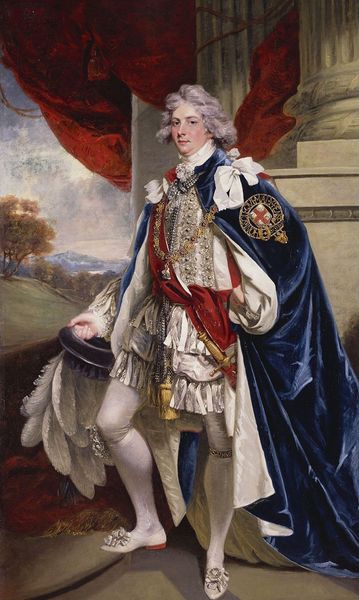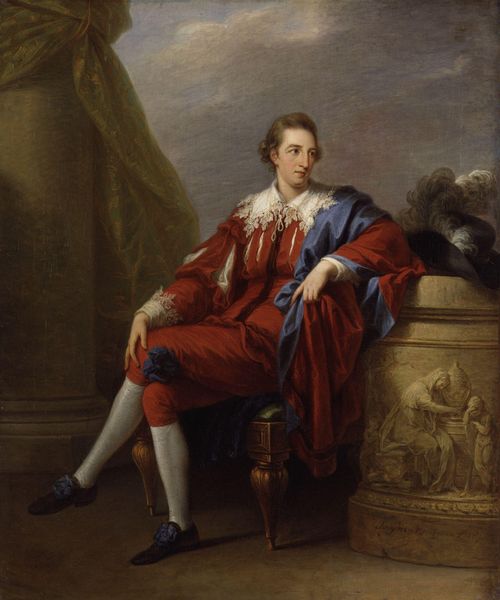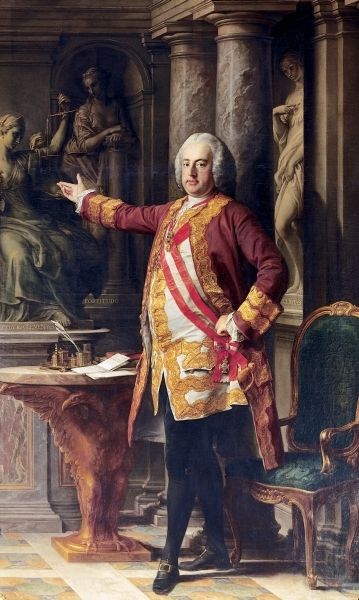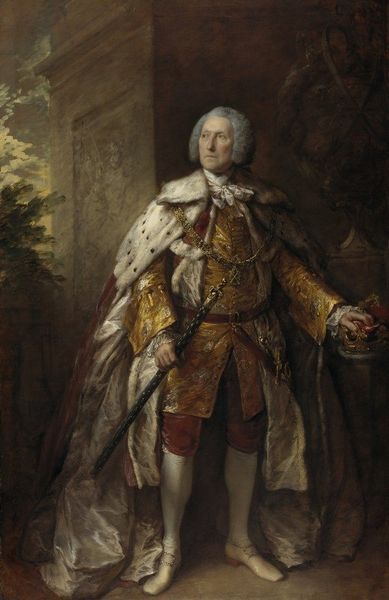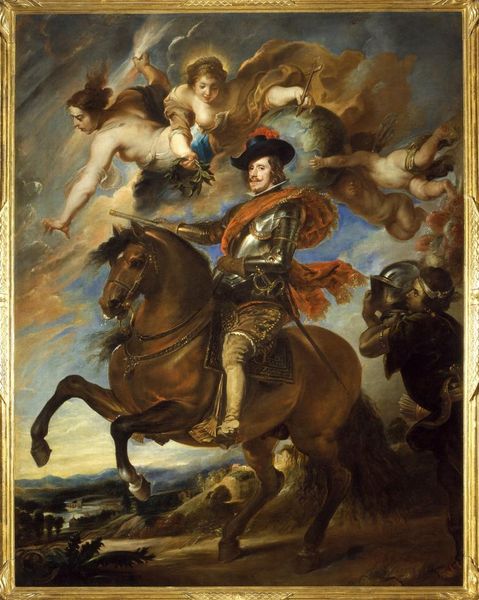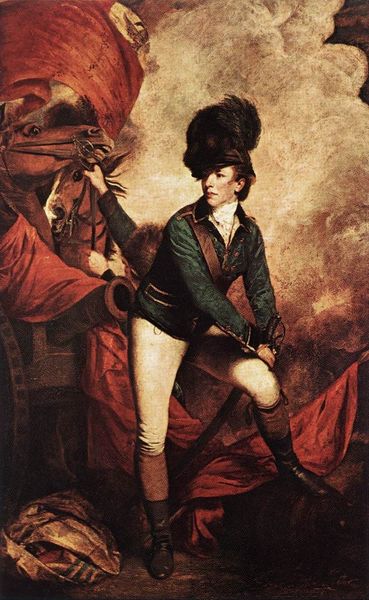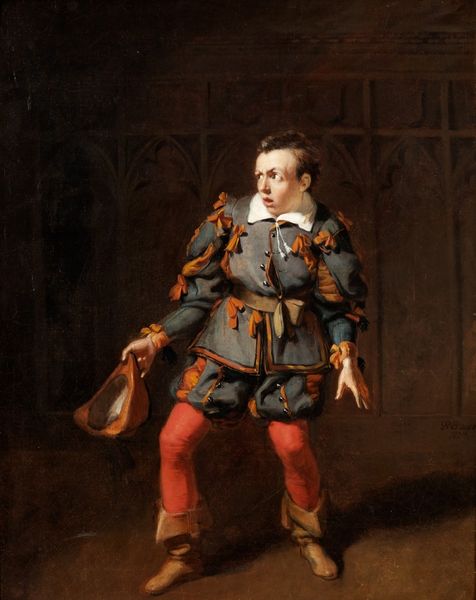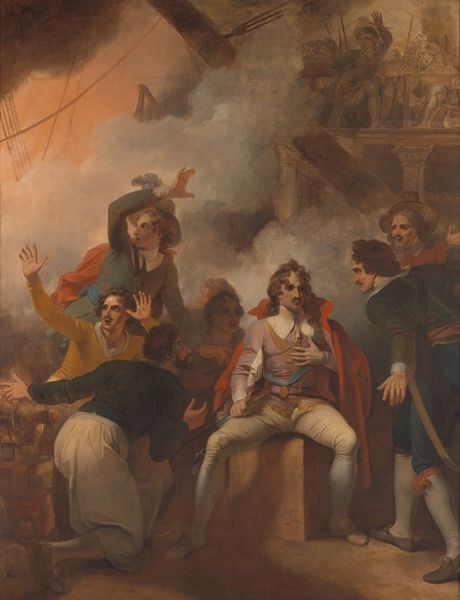
painting, oil-paint
#
portrait
#
baroque
#
painting
#
oil-paint
#
15_18th-century
#
history-painting
Dimensions: 250.8 x 190.5 cm
Copyright: Public domain
Curator: Hogarth's “David Garrick as Richard III,” painted around 1745 and now hanging at the Walker Art Gallery in Liverpool, captures a pivotal moment. Editor: The immediacy is striking. The dramatic lighting and that intense, fearful expression on Garrick's face—it's like we've walked right into the character's nightmare. The artist captured great pathos. Curator: Absolutely. This painting depicts Garrick’s portrayal of Richard III waking from a nightmare just before the Battle of Bosworth Field in Shakespeare's play. Editor: Right, the terror stemming from guilt, reflecting on the weight of historical atrocities perpetuated for power. His hand gestures sell the fear of being haunted, but who is doing the haunting? Curator: Consider Hogarth's position within the rising merchant class and their growing influence on artistic taste. Theatre, particularly Shakespeare, became a cultural touchstone. Garrick's performance was legendary, and Hogarth immortalizes it. Editor: The very performance, in a play written two centuries prior, speaks to the endlessness of the cycles of violence. Richard III, though reviled, reminds audiences that such cruel power is always among them. The armor, discarded, implies his momentary vulnerability stripped bare by conscience, although we know this is fleeting. Curator: The stage setting transforms a fictional play into something that mirrors real-world conflicts within and between families—a comment on England’s dynastic history, perhaps, in a period of ongoing conflict within the British royal family. Editor: That's interesting, too – this painting exists in dialogue with the play. Is Hogarth saying that the sins of Richard, the fictional character, haunt us? Curator: It’s the performance of conscience—a public figure wrestling with inner turmoil. Editor: It becomes another layer of performance itself, and so maybe our interpretation should question the layers: the theater, the role, the actor, the painter. Does the viewer interpret reality or performance? Curator: A crucial question, reflecting on what theater does. Editor: I agree; the impact remains powerful even now. It makes one question performance within morality.
Comments
No comments
Be the first to comment and join the conversation on the ultimate creative platform.
